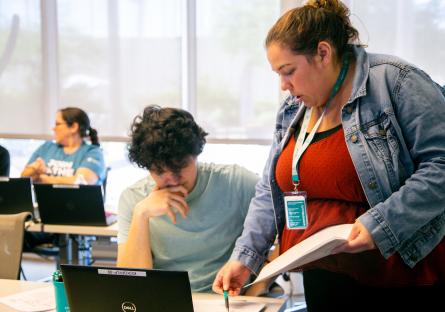
Beginning in the 2024–2025 aid year, the U.S. Department of Education will introduce the FAFSA Simplification Act, which aims to streamline the financial aid application process for students and families.
As the 2024–2025 Free Application for Federal Student Aid (FAFSA) process will be significantly different from previous years, we’ve provided some details to help you navigate your financial aid.
What’s Changed for the 2024–25 FAFSA® Form?
https://youtu.be/UOgIb7StyPU?feature=shared
FAFSA Release Date
The release of the 2024-2025 FAFSA has been postponed, and it is anticipated to be accessible by December 31, 2023, according to an announcement from the Department of Education.
This change is only temporary for the 2024-2025 academic year to accommodate the extensive work required to overhaul the processes and systems used to award federal student aid. In the 2025-2026 aid year, the FAFSA will be available on October 1st as usual.
When Schools Receive Your FAFSA
The Department of Education announced that student's FAFSA submissions will not be provided to their selected colleges until the end of January 2024. This means that our Student Financial Aid office cannot confirm that your FAFSA has been received until a month or more after you have submitted it.
Benefits of FAFSA Simplification
- Less questions and the form will be streamlined
- A more user-friendly experience
- Expanded eligibility for federal student aid
- Reduced barriers for certain student populations*
*Includes homeless and unaccompanied youth, incarcerated students, English language learners, and students from low-income backgrounds.
Changes to the 2024–2025 FAFSA and Financial Aid Process
- The Free Application for Federal Student Aid (FAFSA) for the upcoming aid year typically becomes available on October 1st. However, for the 2024–2025 academic year only, the FAFSA will not be available until December 2023. The exact date in December is yet to be determined.
- The Estimated Family Contribution (EFC) has been replaced by the Student Aid Index (SAI), which is a different way to determine eligibility.
- Tax information will be directly imported into the FAFSA.
- SAI will no longer take the number of students in college into consideration. This may reduce need-based aid eligibility for current students with siblings in college.
- Students will be able to list up to 20 colleges/universities on the FAFSA.
- Each Contributor (student, student’s spouse, parent(s), and/or stepparent) will have to provide consent to complete the FAFSA. If any contributors do not provide their consent, the SAI will not be calculated, and eligibility for financial aid cannot be determined.
- Parents without a Social Security Number will be able to apply for an FSA ID. This will speed up the FAFSA processing time, as they’ll be able to submit the form online rather than having to print, sign, and mail it in.
- For students whose parents are separated or divorced, the guidance on which parent income to report has changed to the parent who provides the most financial support for the student rather than the parent the student lived with the most.
- Students who are considered independent due to homelessness or qualifying dependency override no longer need to recertify their dependency status each year unless their situation changes.
- When required, families must now report the value of their small business or family farm.
Learn more at https://www.maricopa.edu/students/financial-aid/fafsa-simplification.